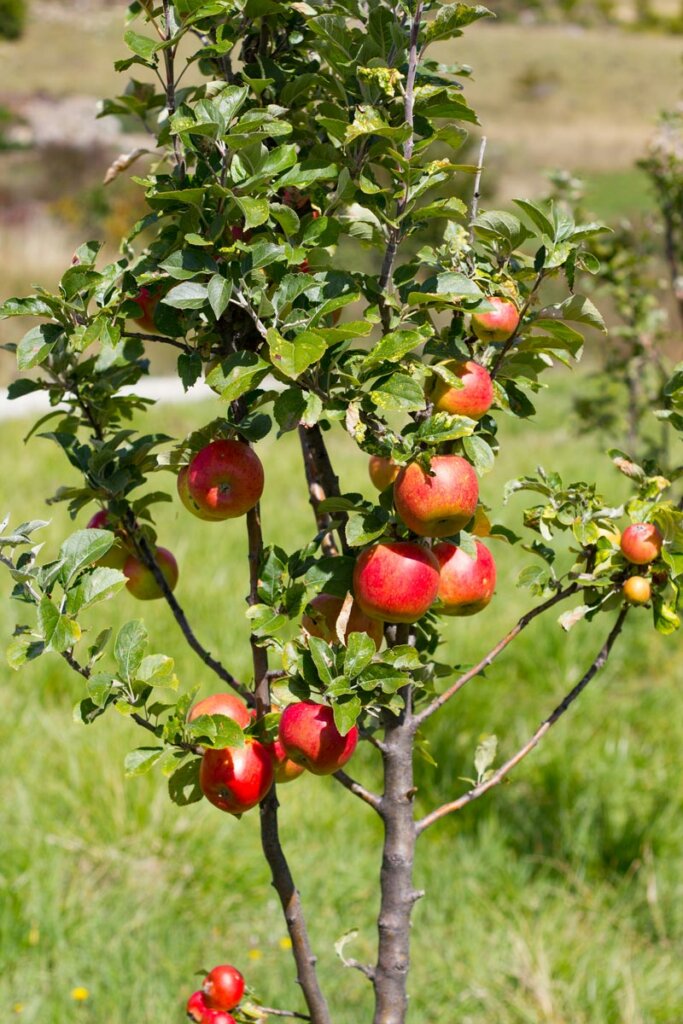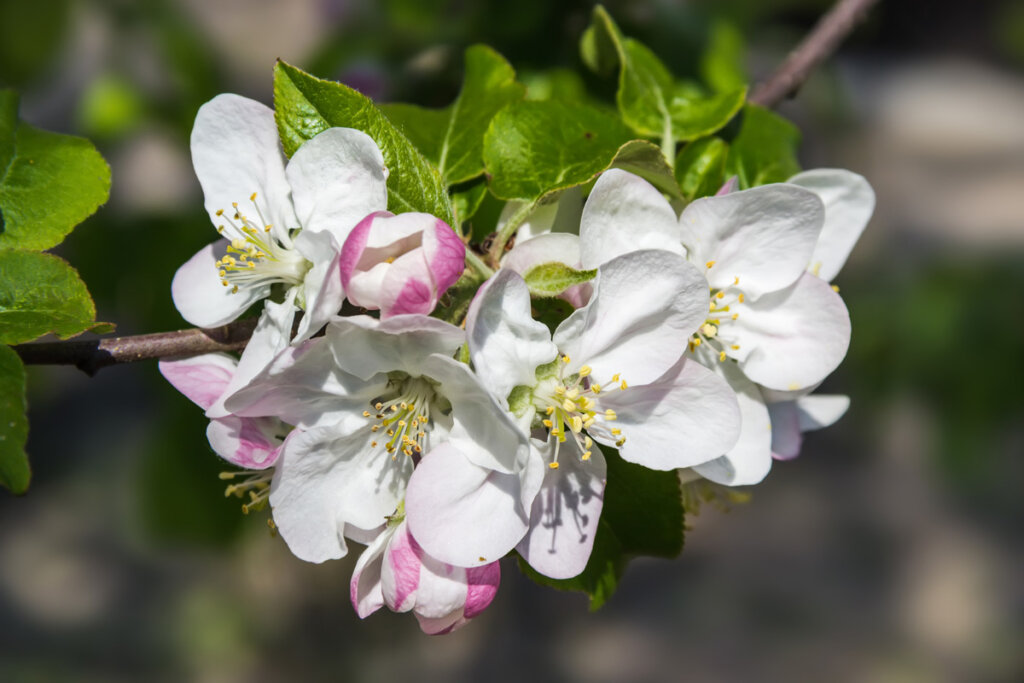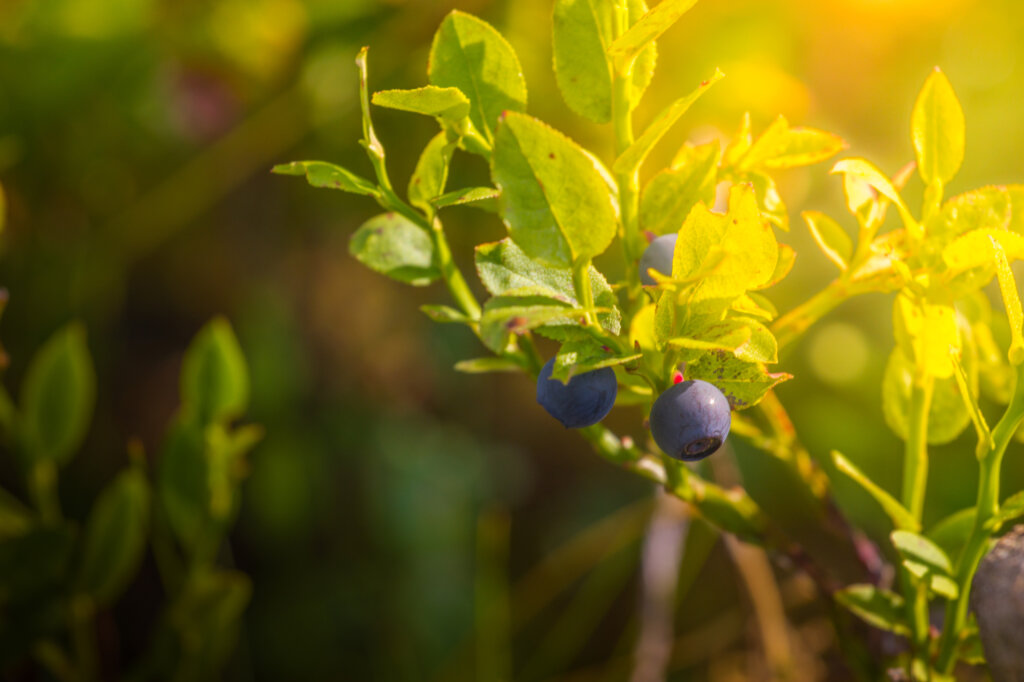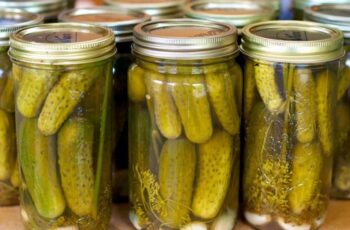Ad Blocker Detected
Our website is made possible by displaying online advertisements to our visitors. Please consider supporting us by disabling your ad blocker.
Digging a Hole
If you plan on moving an established fruit tree or fruit plant or planting a bare root or potted tree, be sure you dig a hole twice as wide and twice as deep. Create a cone shape of dirt in the bottom of the hole and spread the roots out and down this dirt cone (the same technique in How to Plant Strawberries)
Filling the Hole
Backfill the hole with loose dirt and a layer of compost. If any of the roots are broken, remove them before planting. Keep the level of dirt at the same level it was at the nursery. You can usually see the line on the trunk of the tree or bush.
Create a mote around the base of the tree to allow the water to filter down onto the roots instead of running off into the surrounding soil or land.
Use a small amount of water when you plant the tree. The soil will settle and you’ll be able to see where you need to add more dirt.
Watering Schedule
Don’t overwater in the winter months. In the late spring, when the tree leaves out and the soil becomes dry, water deeply 5 to 10 gallons once a week.
Throughout the first few summers, you’ll want to water the plant once a week if you don’t have any rainfall. I neglected to this with one of our new apple trees and lost it. So even in the rainy Pacific Northwest, you’ll still want to follow the rule of watering deeply once a week with a newly planted tree if there isn’t any moisture falling from the sky.
Note: It takes an average of seven years before you’ll be able to harvest a sizeable crop from your fruit trees. Most bare rootstock is a few years old, but you can ask the nursery for more specifics.
The bigger or older the stock, the more expensive it will be.
Raspberries will produce the following year (or the same year in the fall if they’re an ever-bearing variety and planted in the spring) and blueberries usually take a couple of years.
Picking Your Variety of Fruit

An important thing to remember when planting your fruit trees is to be sure you either pick a self-pollinating fruit tree or you purchase two varieties that will cross-pollinate. A crab apple will cross-pollinate almost all apple tree varieties as it blooms for a longer period of time than a regular apple, allowing it to pollinate early, mid, and late-season apples. Although a crab apple is so sour you’ll never make the mistake of biting into one twice, it is high in natural sources of pectin and will help you get a beautiful setting on your jams and jellies.
Some varieties of apples become ripe later in the season. If you live in a zone with early frosts or shorter growing seasons, you might want to pick an earlier ripening variety.
You can also purchase “fruit cocktail” trees, where several varieties have been grafted onto one stock. We haven’t had much luck with these as the grafted branches tend to die off after a year or two and the main stock of the tree takes over.
Even if a fruit variety is self-pollinating, you’ll get a larger harvest if a cross-pollinator is nearby.
My favorite apple is the heirloom Gravenstein, but because it’s sterile (doesn’t pollinate anything else) so we have a crab apple, and also a Gala and Honeycrisp.
The best fruit trees for small spaces are dwarf or semi-dwarf varieties.
Self-Pollinating vs. Cross-Pollinating Fruits

As mentioned above, you’ll want to be sure whether or not your fruit tree is a self-pollinating or cross-pollinating variety. Here’s a list to keep in mind, but wherever you buy your tree, you should be able to find out which variety you’re purchasing.
Self-Pollinating Fruits
- Apricots
- Pomegranate
- Citrus Fruit
- Grapevines
- Persimmons
- Sour Cherries
- Blackberries
- Raspberries
- Strawberries
- European plums
Most berries and European plums will do better if they have another variety to cross-pollinate with.
Cross-Pollinating Fruits
- Apple (there are a few self-pollinating varieties like Golden Delicious, but they will do better if they have a cross-pollinator)
- Blueberries
- Elderberries
- Pears
- Japanese Plums
- Sweet Cherries
- Most nut trees
Bare Root Fruit Trees to Plant in Winter
- Apple
- Apricot
- Asian pears
- Crabapple
- Sweet Cherry
- Sour Cherry
- Pears
- Peaches
- Plums
Bonus: Use the same tips for planting Filberts or hazelnut trees.
Fruit Trees for Small Spaces

Even if you don’t have a large yard or any land you can still plant fruit trees. Look for dwarf varieties. They can be grown in containers.
Berry bushes like blueberries are well suited to containers as well

